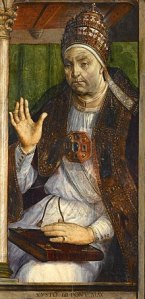Canon law, as practiced in most of Europe to the late mediaeval period, is noticeably different to the laws of the United Kingdom today, although it is somewhat looser today in several ways. Consequently, secret marriages were banned eventually, only first cousins now require dispensations and relationships do not beget affinity, although previous manages still do. Such reforms began at the Council of Trent.
England (and Wales) had a gradual non-linear Reformation from the 1530s and Scotland a more sudden one in about 1560, although many Catholics still consider themselves bound by it, even if statute law in other nations now overrides it. From almost a hundred years ago, British family law has made any child legitimisable if their parents were free to marry at birth, even if they didn’t actually marry until later, although this supersedes English common law (the Statute of Merton) and not canon law.
However, the Moynihan case shows that this change does not apply to titles and a child must be legitimate in the traditional sense to inherit one. Marriage totally in secret is not allowed now as banns have become necessary – before the ceremony, not over a year later – and adultery no longer precludes validly marrying the partner later.
 Obviously, Edward IV‘s predicament did fall under canon law to the full extent. Admitting to his bigamy would have involved communicating with the Pope (Sixtus IV for Edward’s second reign) or his legate, either of whom could have been helpful if the circumstances allowed. So the conversation might go as follows:
Obviously, Edward IV‘s predicament did fall under canon law to the full extent. Admitting to his bigamy would have involved communicating with the Pope (Sixtus IV for Edward’s second reign) or his legate, either of whom could have been helpful if the circumstances allowed. So the conversation might go as follows:
- Dear Holy Father,
I have sinned by committing bigamy. I married Lady Eleanor Talbot, an older, Lancastrian widow, in secret during June 1461. At some stage we separated and she died in Norwich just over seven years later, without issue. In spring 1464, I purported to marry Elizabeth Wydeville, another older, Lancastrian widow, also in secret. Due to pressure from her family, I publicised this and crowned her so we have lived in sin ever since, having several children together, many of whom were born after Lady Eleanor’s death.
Is there any way you could find to legitimising them, please?
Your son, Edward. - Edward, my child,
This is a serious matter. That you have committed adultery, lived in sin with and had children by your mistress, marrying her in secret, greatly complicates the issue in that the relationship is now irrevocably “polluted” and you cannot now remarry her, nor can we legitimise your children (which was one loophole if your second ceremony had been in public). You are now free to marry a third woman as your real wife has now passed away.
We have examined the case of your great-grandparents John of Gaunt and Catherine de Roet, she being his mistress and marrying him later, such that they were legitimised, but there was no pretence and no bigamy involved in that example.
We can only help if there was some form of invalidity in your first marriage – consanguinity, affinity, lack of consent, witchcraft, infertility or non-consummation – but our clerks can find no previous connection between you in that sense. I understand that you have accused your mistress’s mother of witchcraft so it would look complicated to resort to it twice, whilst I understand that Lady Eleanor’s former father-in-law may have witnessed the marriage, which strongly suggests that she consented.
Regrettably, we cannot issue a dispensation for bigamy. That you and she separated after a few years and that her first marriage was also short creates some difficulty proving infertility and you are the only person alive who can comment on the issue of consummation, although a pp marriage would require consummation to make it valid.
It seems that we cannot help you, unless you outlive Elizabeth and have legitimate children by a future wife. You ought also to announce your problem to your subjects, now or then.
Yours, Sixtus.
Of course, Edward could have broken away completely, as his portly grandson did sixty or so years later, then granted his own annulment without announcing it. However, we know he didn’t break away as the next few reigns saw dispensations to English subjects issued by the papacy, such as the Lumley-Conyers case in 1489. Helmholz summarises the legal situation in Loyalty, Lordship and Law (Richard III and Yorkist History Trust, pp.91-104).

11 comments